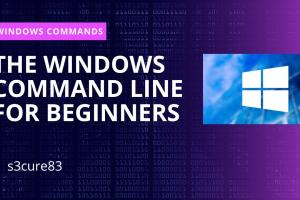Mastering Windows Command Prompt: Create and Delete Files and Directories Like a Pro

-
Quick Links:
- Introduction
- Understanding Command Prompt
- Basic Commands Overview
- Creating Files in Windows Command Prompt
- Deleting Files in Windows Command Prompt
- Creating Directories in Windows Command Prompt
- Deleting Directories in Windows Command Prompt
- Case Studies and Examples
- Expert Insights
- FAQs
Introduction
In the world of Windows operating systems, the Command Prompt is a powerful tool that many users overlook. While graphical user interfaces (GUIs) are user-friendly, mastering the Command Prompt can significantly enhance your file management skills. This guide will walk you through the process of creating and deleting files and directories using Windows Command Prompt, making you a proficient user of this essential tool.
Understanding Command Prompt
The Command Prompt, often referred to as CMD or cmd.exe, is a command-line interpreter application available in most Windows operating systems. It allows users to execute commands to perform various tasks, such as managing files and directories, automating processes, and troubleshooting issues. Understanding how to navigate and utilize Command Prompt effectively is crucial for both casual users and IT professionals.
Why Use Command Prompt?
- Efficiency: Performing tasks through commands can be faster than using a GUI.
- Scripting: Users can automate repetitive tasks using batch scripts.
- Access to Advanced Features: Some features are only accessible via the command line.
Basic Commands Overview
Before delving into file and directory management, it’s essential to familiarize yourself with some basic commands in Command Prompt:
- dir: Lists the files and directories in the current directory.
- cd: Changes the current directory.
- mkdir: Creates a new directory.
- del: Deletes one or more files.
- rmdir: Removes a directory.
Creating Files in Windows Command Prompt
Creating files in Command Prompt can be done using various methods. Below are the most common techniques:
1. Using the echo Command
The simplest way to create a new text file is by using the echo command. Here’s how:
echo This is my text > myfile.txtThis command creates a file named myfile.txt containing the text "This is my text".
2. Using the type nul Command
Another way to create an empty file is by executing:
type nul > emptyfile.txt3. Using the copy con Command
This method allows you to create a file and input text directly from the Command Prompt:
copy con mynewfile.txtAfter executing this command, type your text and press CTRL + Z to save and exit.
Deleting Files in Windows Command Prompt
Deleting files is straightforward with the del command. Here’s how to use it:
1. Deleting a Single File
del myfile.txt2. Deleting Multiple Files
del file1.txt file2.txt3. Deleting All Files of a Certain Type
del *.txtThis command deletes all text files in the current directory.
Creating Directories in Windows Command Prompt
Creating directories (folders) is accomplished using the mkdir command.
1. Creating a Single Directory
mkdir NewFolder2. Creating Nested Directories
mkdir ParentFolder\ChildFolderDeleting Directories in Windows Command Prompt
To delete directories, use the rmdir command. Note that the directory must be empty unless you use the /s parameter.
1. Deleting an Empty Directory
rmdir EmptyFolder2. Deleting a Directory with Contents
rmdir /s FullFolderCase Studies and Examples
Understanding how to use these commands can significantly improve your productivity. Here are a few case studies showcasing practical applications:
Case Study 1: Automating File Organizing
A small business owner can utilize batch scripts to organize files daily, moving them into designated folders based on file types.
Case Study 2: Deleting Temporary Files
IT professionals can create scripts to delete temporary files from user directories, freeing up disk space and improving system performance.
Expert Insights
Experts recommend regularly practicing Command Prompt commands to become proficient. Familiarity with the command line can save time and reduce errors in file management.
FAQs
1. Can I create a file without any content?
Yes, using type nul > filename.txt creates an empty file.
2. What happens if I delete a file using Command Prompt?
The file is permanently deleted and cannot be recovered unless you have backup solutions in place.
3. Can I create multiple directories at once?
Yes, you can create multiple directories by using mkdir dir1 dir2 dir3.
4. How do I check if a file or directory exists?
You can use the dir command to list the contents and see if your file or directory exists.
5. Is there a way to undo deletions?
Once a file is deleted via Command Prompt, it is not easily recoverable. Always ensure you have backups.
6. Can I use Command Prompt on Windows 10?
Yes, Command Prompt is available on all Windows versions, including Windows 10.
7. How do I run Command Prompt as an administrator?
Right-click on the Command Prompt icon and select "Run as administrator".
8. Are there any risks in using Command Prompt?
Improper commands can lead to loss of data. Always ensure you understand the commands before executing them.
9. Can I copy files using Command Prompt?
Yes, you can use the copy command to copy files from one location to another.
10. What is the difference between del and rmdir?
del is used for files, while rmdir is for directories.
By mastering these commands, you will become adept at managing your files and directories through Command Prompt, enhancing your overall efficiency in using Windows.